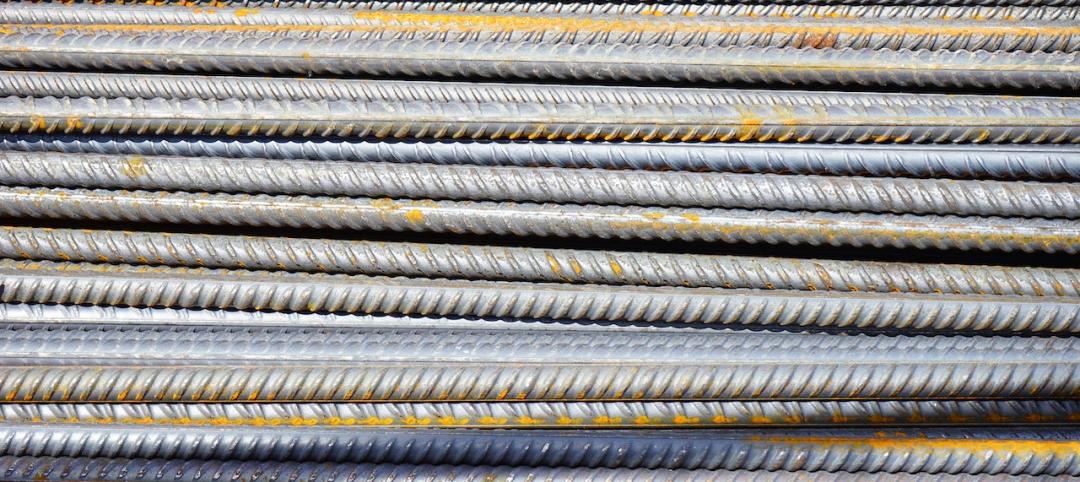In response to manufacturer demand, the Health Product Declaration Collaborative, together with GreenCE, GreenCircle, NSF International, PE International, SCS Global Services, ToxServices LLC, and UL Environment, is developing an official protocol for third party verification of HPDs. A similar process is underway to define expectations for quality assurance consulting.
The Health Product DeclarationTM (HPDTM) offers a framework for manufacturers to list product ingredients and associated health information. It also provides a context towards a better understanding of the variables in existing inventory systems.
“Establishing common criteria for third party verification and quality assurance consulting is critical to advance the collective knowledge of the building industry, particularly as questions move up the supply chain,” said Eden Brukman, Technical Director of the HPD Collaborative. “For these services to be successful, consistency is key.”
Alpar Architectural Products LLC, ASSA ABLOY Door Security Solutions, Bradley Corporation, Cosentino Group, Forbo Flooring Systems, GAF, Interface, Mohawk Group, Nydree Flooring, PROSOCO, and Teknion are already working with one or more of the provisional third party verifiers and quality assurance consultants so that, when released in Spring 2014, the official protocols will be based on functional experience and the best standard of practice. This initial discovery phase of documenting the necessary methodology, credentials, and training will run through February 2014. Additional manufacturers are also encouraged to participate.
“Decision makers are looking for more information than ever before about the products they specify, and we know that they see value in that information being backed by third-party substantiation,” said Sara Greenstein, President, UL Environment. “UL Environment is proud to participate in this pilot with the HPD Collaborative to ensure quality and consistency in the verification process, and to offer manufacturers a way to meet new market demands for third-party verified Health Product Declarations.”
“Creating a third-party review process for HPDs is a necessary step in providing accurate material content data, and GreenCircle is proud to be at the forefront of this movement,” said Tad Radzinski, Certification Officer.
Dr. Margaret Whittaker, Managing Director and Chief Toxicologist of ToxServices LLC added: “The HPD is a valuable tool for all levels of the supply chain and an important first step in a manufacturer’s commitment to product sustainability. ToxServices is pleased to help product manufacturers complete their HPDs and to provide confidential third-party services that facilitate the reporting of proprietary formulation information.”
"The HPD is a much needed step forward for the construction industry,” said Tara Blank, Ph.D. of Elixir Environmental. “GreenCE and Elixir Environmental are excited to be involved in the pilot program for development of a third party verification system for The HPD, which we expect will act to further increase transparency and accountability of building products."
Teresa McGrath, Supervising Toxicologist for NSF Green Chemistry Programs agreed, “HPDs are an important addition to the expanding portfolio of product information. Along with environmental product declarations (EPDs) and multi-attribute sustainability standards, HPDs will allow specifiers, buyers, and end users to get a standardized set of third-party verified, transparent data and information about the materials and any potential hazards associated with ingredients in building products. NSF is committed to helping the business products industry meet the HPD requirements and providing third-party validation services.”
“Transparency and disclosure are now market requirements. Providing software solutions and technical support for the development of protocols and various types of product declarations and public reports is the core of our business, and has been for 20 years,” said Heather Gadonniex, Business Development Director, PE INTERNATIONAL. “We are pleased to lend our collective expertise to drive continuous improvement of the HPD standard and ensure our clients’ interests are represented throughout the process.”
“SCS Global Services is committed to the continual improvement of the HPD process to ensure the highest level of chemical transparency and disclosure,” said Stowe Beam, Managing Director of Environmental Certification Services. “As a trusted leader in environmental certification, we are pleased to offer third-party verification of HPDs and inform the HBD Collaborative pilot to develop a standardized verification system.”
About Health Product Declaration Collaborative
The Health Product Declaration Collaborative is a customer-led organization committed to the continuous improvement of the building industry’s performance through openness and innovation in the product supply chain. The HPD Collaborative created and supports the Health Product Declaration (HPD), an objective tool for the accurate reporting of product contents and how each ingredient relates to the bigger picture for ecological health. The HPD helps us impartially define the critical information needed by manufacturers, suppliers, building designers, specifiers, owners, and users. It is freely available at www.hpdcollaborative.org.
Related Stories
Building Materials | Jun 14, 2023
Construction input prices fall 0.6% in May 2023
Construction input prices fell 0.6% in May compared to the previous month, according to an Associated Builders and Contractors analysis of the U.S. Bureau of Labor Statistics’ Producer Price Index data released today. Nonresidential construction input prices declined 0.5% for the month.
Mass Timber | Jun 13, 2023
Mass timber construction featured in two-story mixed-use art gallery and wine bar in Silicon Valley
The Edes Building, a two-story art gallery and wine bar in the Silicon Valley community of Morgan Hill, will prominently feature mass timber. Cross-laminated timber (CLT) and glulam posts and beams were specified for aesthetics, biophilic properties, and a reduced carbon footprint compared to concrete and steel alternatives.
Cladding and Facade Systems | Jun 5, 2023
27 important questions about façade leakage
Walter P Moore’s Darek Brandt discusses the key questions building owners and property managers should be asking to determine the health of their building's façade.
AEC Tech | May 9, 2023
4 insights on building product manufacturers getting ‘smart’
Overall, half of building product manufacturers plan to invest in one or more areas of technology in the next three years.
Building Technology | May 4, 2023
3D printing for construction advances in Germany
The largest 3D-printed building in Europe will have a much lower carbon footprint.
Mass Timber | May 3, 2023
Gensler-designed mid-rise will be Houston’s first mass timber commercial office building
A Houston project plans to achieve two firsts: the city’s first mass timber commercial office project, and the state of Texas’s first commercial office building targeting net zero energy operational carbon upon completion next year. Framework @ Block 10 is owned and managed by Hicks Ventures, a Houston-based development company.
3D Printing | Apr 11, 2023
University of Michigan’s DART Laboratory unveils Shell Wall—a concrete wall that’s lightweight and freeform 3D printed
The University of Michigan’s DART Laboratory has unveiled a new product called Shell Wall—which the organization describes as the first lightweight, freeform 3D printed and structurally reinforced concrete wall. The innovative product leverages DART Laboratory’s research and development on the use of 3D-printing technology to build structures that require less concrete.
Student Housing | Mar 13, 2023
University of Oklahoma, Missouri S&T add storm-safe spaces in student housing buildings for tornado protection
More universities are incorporating reinforced rooms in student housing designs to provide an extra layer of protection for students. Storm shelters have been included in recent KWK Architects-designed university projects in the Great Plains where there is a high incidence of tornadoes. Projects include Headington and Dunham Residential Colleges at the University of Oklahoma and the University Commons residential complex at Missouri S&T.
AEC Innovators | Mar 3, 2023
Meet BD+C's 2023 AEC Innovators
More than ever, AEC firms and their suppliers are wedding innovation with corporate responsibility. How they are addressing climate change usually gets the headlines. But as the following articles in our AEC Innovators package chronicle, companies are attempting to make an impact as well on the integrity of their supply chains, the reduction of construction waste, and answering calls for more affordable housing and homeless shelters. As often as not, these companies are partnering with municipalities and nonprofit interest groups to help guide their production.
Codes | Mar 2, 2023
Biden Administration’s proposed building materials rules increase domestic requirements
The Biden Administration’s proposal on building materials rules used on federal construction and federally funded state and local buildings would significantly boost the made-in-America mandate. In the past, products could qualify as domestically made if at least 55% of the value of their components were from the U.S.

















